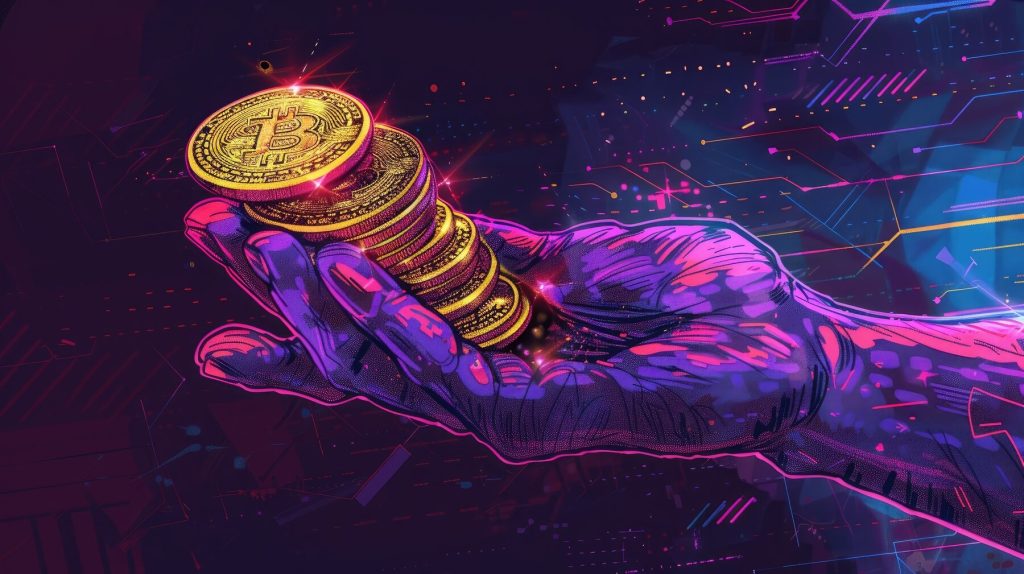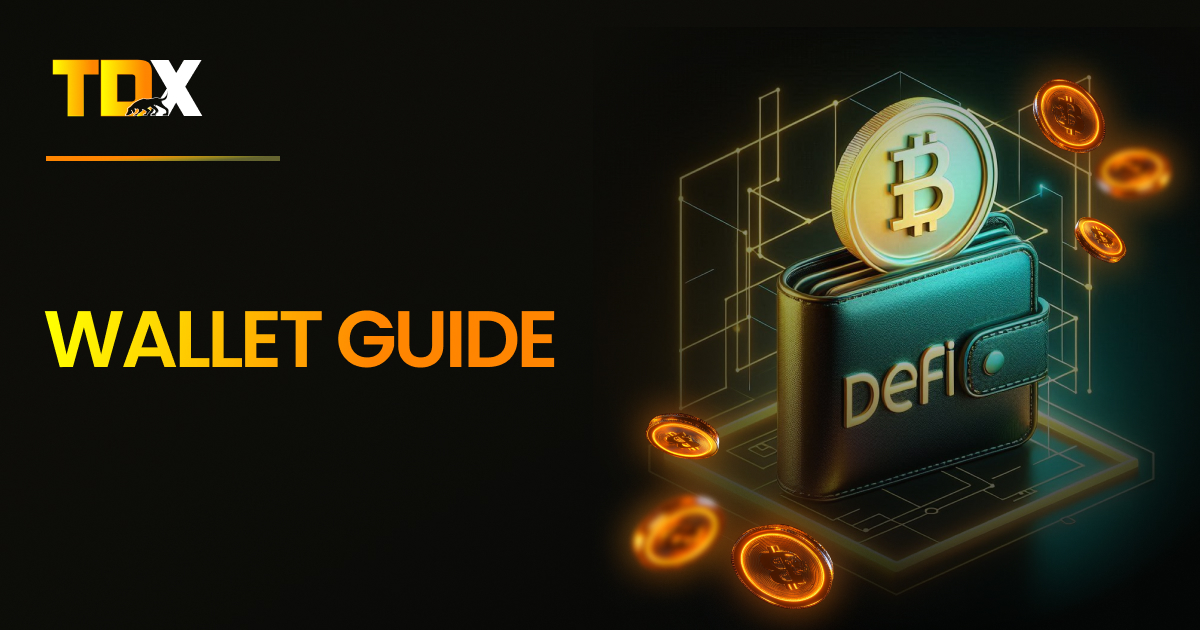 Back to blog
Back to blog


8 Ways to Evaluate Tokenomics and Avoid Becoming Exit Liquidity to Insiders
Cryptocurrency is all the rage these days, and it captures the attention of everyone from tech enthusiasts to seasoned investors. But with this excitement comes the risk of falling into the trap of “exit liquidity.” This is when everyday investors unknowingly help insiders cash out at high prices, often being left with the losses…
Understanding the ins and outs of tokenomics — the economic backbone of any crypto project — is crucial to avoid these pitfalls. By digging into the details of tokenomics, you can safeguard your investments and spot real opportunities in this thrilling financial frontier. Dive in to learn more!

Use Cases
Understanding tokenomics is essential for assessing a crypto project’s sustainability, particularly through the lens of product-market fit. Product-market fit ensures that a crypto asset meets a significant demand, thereby maintaining high liquidity and market value.
A project with solid tokenomics can effectively convert assets and manage financial obligations, leveraging liquid assets to maintain strong liquidity ratios, such as the current and quick ratios. The most liquid assets, like cash and marketable securities, play a key role in fulfilling short-term debts and improving liquidity.
Projects that rely heavily on token incentive campaigns can face significant challenges. While these schemes might initially boost market liquidity and trading volume, they often lead to a liquidity crisis once incentives are reduced. Poorly structured incentives can result in low liquidity and affect a project’s ability to meet financial obligations. The market depth and bid-ask spreads may also suffer, which leads to volatile market sentiment.

Examples from the crypto world illustrate both ends of the success spectrum. The Terra Luna collapse exemplifies a rapid loss of market liquidity and intrinsic value, drastically affecting its circulating supply and stock market perception.
On the other hand, Ethereum 2.0 has displayed resilience by aligning its token supply and network security with market demand, thereby enhancing its liquidity and market price stability.
To ensure a project’s longevity, understanding the liquidity spectrum—from the most liquid to illiquid assets — is truly vital. Effective tokenomics involves not only managing current liabilities and prepaid expenses but also strategically planning token burns and allocations to optimize the company’s ability to navigate market shifts. Focusing on both liquid and illiquid assets enables crypto projects to build a robust balance sheet capable of withstanding the pressures of pump-and-dump schemes and other market challenges.

Total Supply
You really need to get what total supply means if you want to figure out how much a crypto project is actually worth. Total supply encompasses all tokens ever created, including both the circulating supply and those reserved or allocated for future use. This metric is crucial as it directly affects market liquidity and the ability of the crypto asset to meet financial obligations.
A fixed or maximum token supply often implies scarcity, significantly affecting the market price of the most liquid assets when demand is high. For instance, Bitcoin, with its capped supply of 21 million coins, represents a strong liquidity position, where high liquidity and demand impact its intrinsic value positively.
Mechanisms such as token burns play a vital role in managing total supply. By permanently removing tokens from circulation, token burns can improve liquidity by increasing the market price of the remaining tokens, much like a company buying back its shares in the stock market.
This approach reduces the risk of a liquidity crisis by aligning the token’s supply with current market conditions and demand, thus stabilizing the balance sheet. Binance Coin (BNB) is a prominent example, where quarterly token burns have strategically decreased supply, boosting market sentiment and demonstrating strong liquidity management.
Projects that excel in supply management often utilize additional tokens allocated for strategic purposes, such as enhancing network security or addressing short-term debts. Ethereum’s strategic restriction on new coin issuance post-merge showcases a deep understanding of tokenomics that ensures that token allocations align with broader market liquidity needs.

It not only supports the token’s intrinsic value, it also maintains accounting liquidity and robust financial health. Effective supply management, incorporating elements like marketable securities and liquid assets, is essential for any crypto project aiming to succeed in the field of digital finance.
Understanding liquidity requires considering both liquid assets, such as cash and marketable securities, and illiquid assets, which may include real estate or other assets not sold quickly. The liquidity spectrum, from the most liquid assets to less liquid ones, affects a company’s ability to meet short-term obligations and manage current liabilities.
Liquidity ratios, such as the current ratio and quick ratio, are vital indicators of a company’s financial health, while the cash ratio highlights the role of cash flow in converting assets to meet immediate needs. Maintaining high liquidity and a strong working capital ratio ensures that crypto projects can effectively navigate pump-and-dump schemes and other market challenges, promoting long-term sustainability and stability in the stock market.

Circulating Supply
A low circulating supply, or float, can significantly impact price volatility within the realm of tokenomics. With fewer tokens available for trade, market liquidity is reduced, leading to lower trading volume. This scarcity means that even small trades can cause substantial price swings, making the market landscape unpredictable. For example, a limited float often results in larger bid-ask spreads, as demonstrated in this study on market liquidity.
For investors, the risks are considerable. Minor sell orders can easily trigger a liquidity crisis, significantly affecting market sentiment and price stability. This environment is ripe for pump-and-dump schemes, where manipulative actors can exploit low liquidity to artificially inflate prices before selling off, leaving other investors with losses.
To assess the stability of a project’s circulating supply, investors should focus on several key strategies. Reviewing token allocations and the maximum token supply can shed light on potential future market pressures. Monitoring market depth is essential to gauge how additional tokens might affect liquidity. Evaluating a crypto project’s white paper for transparency on token distribution plans is also vital.
Understanding liquidity ratios and financial assets enables investors to navigate market price fluctuations effectively in the current market, empowering them to make informed decisions about their involvement in any crypto project.

Fully Diluted Valuation (FDV)
Fully Diluted Valuation (FDV) refers to the market capitalization of a crypto project assuming all its tokens, including those not yet in circulation, are available at the current market price. FDV is a crucial metric in tokenomics as it provides insight into the project’s maximum token supply and potential market size. Understanding FDV allows investors to assess whether the market price truly represents the project’s inherent value.
When assessing a crypto project, comparing its current valuations with previous VC rounds is essential. This comparison offers insights into market sentiment and gauges the potential value of the initial investment. A significant increase in valuation without substantial project updates might suggest speculative trading rather than intrinsic growth.
Drastic differences between current and previous valuations can signal warning signs about a project’s future. If the FDV is disproportionately high compared to actual market activity, it might indicate poor tokenomics or even a looming liquidity crisis. Such discrepancies often reflect a lack of market depth, suggesting that the project may struggle to maintain its valuation in the long term.
Insider Allocation
Insider allocation refers to the distribution of a significant portion of a crypto project’s tokens to insiders and venture capitalists (VCs). While such allocations are common, they pose potential risks to tokenomics and market sentiment. High percentages of tokens allocated to insiders can lead to a liquidity crisis, as these stakeholders may prioritize their financial obligations over the project’s health, especially when market liquidity is low.
Once tokens vest, the release of these allocations can cause substantial sell pressure, affecting token supply dynamics and potentially reducing the market price. This sell pressure can disrupt market liquidity and result in lower trading volumes as other investors react to perceived instability. For instance, the Trump-backed World Liberty Financial project allocated 70% of its tokens to insiders, raising concerns about potential sell-offs and market manipulation.
Understanding token allocations and their potential impact helps investors assess the inherent risks associated with insider-heavy projects, enabling informed decisions about their involvement.

Token Distribution
Token distribution is a critical aspect of tokenomics that influences market liquidity and the success of a crypto project. It is important to prioritize distributing tokens to everyday users rather than just early insiders.
When insiders get their tokens first, it often sets the stage for retail investors to become exit liquidity, facing increased sell pressure as these insiders cash out. It can severely impact market liquidity, causing a liquidity crisis and reducing trading volumes, which can drive market prices down and shake investor confidence.
To avoid such pitfalls, evaluating the fairness of a project’s token distribution plan is essential. Look at how tokens are allocated among stakeholders and what vesting schedules are in place. A fair and transparent distribution strategy helps align incentives and minimizes the risk of pump-and-dump schemes.
Vesting Schedule
A well-structured vesting schedule is crucial in preventing insider dumping, thereby maintaining price stability and ensuring robust market liquidity. Gradual token release through vesting schedules helps mitigate sudden sell-offs, stabilizing tokenomics and preventing a liquidity crisis.
This gradual release aligns the financial obligations of insiders with long-term project success, ensuring they are invested in the project’s growth rather than seeking short-term gains.
Vesting schedules serve to align insiders’ interests with the project’s future, fostering a commitment to sustained development and market confidence. For instance, projects like Ethereum have implemented vesting strategies that emphasize gradual token release, which has contributed to its market resilience and investor trust.
Case studies from successful crypto projects demonstrate the effectiveness of well-planned vesting strategies. For example, Chainlink used a vesting approach that contributed to its stable market presence by aligning insider incentives with the broader community’s interests.

Competitive Analysis
Let’s dive into why it’s crucial to stack up crypto projects side-by-side in the same sector. It isn’t just about number-crunching; it is about spotting the diamonds in the rough. By examining projects, you get a feel for their market potential and tokenomics. Metrics like total value locked (TVL), active wallets, transaction volume, and integrations aren’t just fancy jargon — they are your tools for understanding a project’s market liquidity and financial assets.
TVL, for instance, gives you a peek into the liquid assets secured in a project, hinting at its intrinsic value. Checking out active wallets and transaction volume helps you gauge user engagement and the project’s overall health.
Take Bitcoin, for example. Early adopters who conducted thorough market research recognized its limited supply and decentralized nature, leading to significant returns as its value appreciated. Similarly, Ethereum’s potential for decentralized applications was identified through detailed analysis, resulting in substantial investments and growth. Binance Coin (BNB) and Chainlink (LINK) are other examples where market research highlighted their unique value propositions, leading to profitable outcomes for informed investors.
Competitive analysis is your secret weapon for crafting a solid investment strategy in the ever-evolving crypto landscape. Using these insights, you can identify projects with the potential to convert assets into growth and maintain strong liquidity.

Conclusion
Understanding tokenomics is crucial for protecting your investments and avoiding the pitfall of becoming exit liquidity for insiders. Diving into the complexities of tokenomics allows investors to effectively evaluate a project’s liquid assets, market liquidity, and financial obligations.
Focusing on liquidity ratios, intrinsic value, and trading volume offers a clearer insight into a crypto asset’s potential and stability. Keeping in tune with market sentiment and financial indicators further enhances informed investment decisions, enabling you to approach the volatile crypto market with confidence and sound judgment.
40,000 readers 🚀 are getting insights with our media
 Read on Medium
Read on Medium 

Article
“Is Ethereum dead?” This is a trending argument that is appearing in various crypto communities and media. Which is not…


Guide
Welcome to the beginner’s guide on Trust Wallet, MetaMask, and Exodus—three most common cryptocurrency wallets for managing your crypto assets….


Article
When Venezuela’s inflation hit 189.8% in 2023 [Central Bank of Venezuela, 2023], Maria’s life savings of 200 million bolivars (enough…


Article
For generations, Indians have trusted one investment: fixed deposits (FDs). If you walk into any Indian household, chances are someone…


